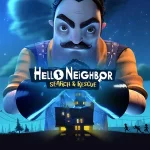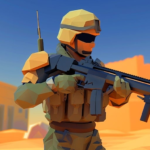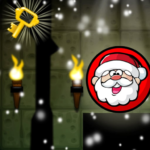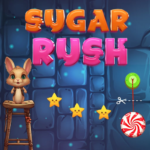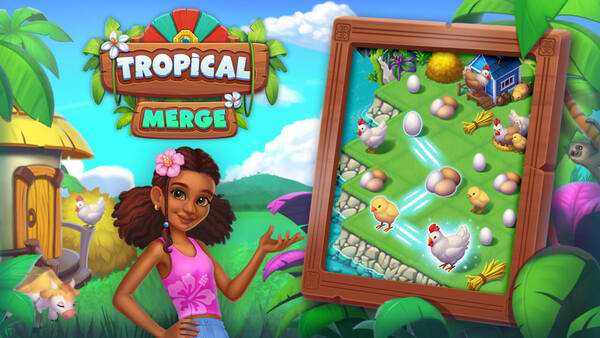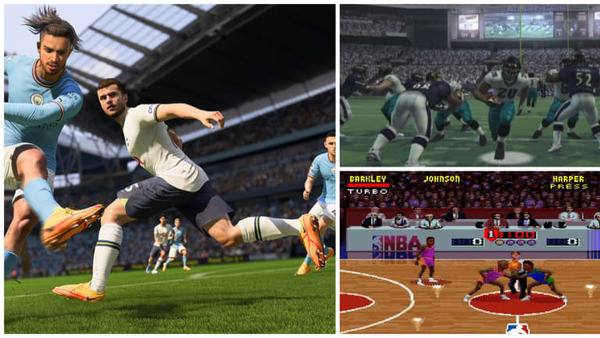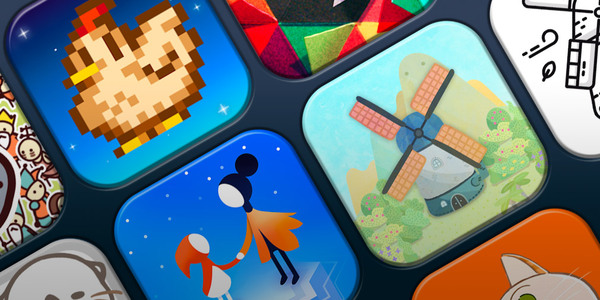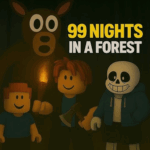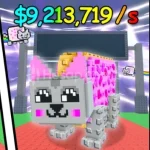Geometry Dash, developed by Robert Topala and released under his studio RobTop Games in 2013, is a fast-paced rhythm-based platformer that has earned a cult following thanks to its addictive gameplay, iconic music, and a robust level editor. What started as a simple mobile game has evolved into a sprawling creative hub for players who seek not only a challenge but a canvas for their artistic vision. Known for its difficulty and precise controls, Geometry Dash challenges players to synchronize their movements with powerful EDM soundtracks as they guide a square-shaped icon through spike-laden courses. Over time, the game has grown in both content and community, spawning several updates, spinoffs, and a massive user-generated level ecosystem. This in-depth article will explore the core elements of Geometry Dash, its historical evolution, design philosophy, cultural impact, community engagement, and future potential.
The Origins of Geometry Dash and Its Release
Geometry Dash was released on August 13, 2013, originally for iOS and later for Android, Windows, and macOS. Robert Topala, the solo developer behind RobTop Games, envisioned a rhythm-based game with intuitive controls but challenging mechanics. The first version launched with only seven levels and a handful of customization options, yet it was an immediate hit thanks to its tight gameplay and catchy soundtracks by artists such as DJVI, Waterflame, and F-777. It combined reflex-based platforming with musical timing, offering a sensory experience unlike anything else on mobile at the time. Players needed only one input—tap or click—to control the jump, but mastering the game required memorization, timing, and precision. As word spread about its difficulty and catchy music, Geometry Dash exploded in popularity, becoming one of the top paid apps in many countries.
Core Gameplay Mechanics and Rhythm Integration
Geometry Dash’s gameplay centers around guiding a customizable icon through levels filled with spikes, saw blades, portals, and gravity switches. The controls are deceptively simple: a single tap makes your cube jump. Yet, each level is designed with pixel-perfect timing in mind, requiring players to internalize the rhythm of the background track. This audio-visual synchronicity creates a unique experience where the music isn’t just background noise—it’s part of the challenge. The game introduces different forms like the ship, ball, UFO, and wave, each with unique physics. These transformations keep gameplay fresh and increasingly complex. Additionally, gravity portals flip the direction of gravity, mirror portals invert the screen, and speed portals adjust the game’s tempo. This layering of mechanics, combined with level design that matches the music beat-for-beat, results in an immersive and highly rewarding gameplay loop.
Level Design and Official Stages
The base game includes 21 official levels created by RobTop, ranging from beginner-friendly stages like “Stereo Madness” to brutally difficult ones like “Deadlocked.” Each level introduces new mechanics gradually, serving as a tutorial for advanced gameplay concepts. The difficulty curve is well-structured, with early levels focusing on jump timing and platforming basics while later ones demand mastery of portal usage and multi-form transitions. These official levels also demonstrate the game’s vibrant visual design. Color palettes shift mid-level, backgrounds pulse to the beat, and obstacles sync with the soundtrack’s intensity. Some levels even feature light story elements or thematic environments, like the digital chaos of “Electroman Adventures” or the explosive climax of “Fingerdash.” Though many players spend more time with user-generated content, the official levels serve as a benchmark for quality, creativity, and balance.
The Power and Depth of the Level Editor
One of the most influential features in Geometry Dash is its powerful level editor, introduced early in the game’s lifecycle and expanded significantly in later updates. The editor allows players to create their own levels from scratch, placing objects, designing obstacles, and syncing everything to music. Over time, RobTop added layers of complexity: custom backgrounds, movement triggers, camera controls, layering, and advanced scripts. These tools turned Geometry Dash into a sandbox for creativity. Some levels prioritize visual spectacle, while others focus on raw difficulty or experimental mechanics. The best creators—known in the community as “level artists”—push the boundaries of what seems possible within the game engine. The editor's accessibility combined with its depth has led to over 70 million user-created levels, giving players nearly infinite content to explore.
The Role of Music and Its Iconic Soundtracks
Music is at the heart of the Geometry Dash experience. The game features an eclectic mix of electronic, dubstep, chiptune, and techno tracks sourced from artists on Newgrounds. Songs like “Back on Track,” “xStep,” and “Clutterfunk” are instantly recognizable to fans, while harder levels use high-intensity tracks that elevate the adrenaline factor. Each level is crafted around the rhythm of its chosen song, ensuring that jumps, falls, and transformations feel synchronized with the beat. This rhythmic harmony transforms gameplay into a kind of interactive dance. Beyond gameplay, the soundtrack has a legacy of its own. YouTube videos, remixes, and even fan-made music have extended the musical culture of the game. Many players discover new artists through Geometry Dash and explore the musical world of Newgrounds because of its integration in the game.
Community Engagement and User-Created Content
The Geometry Dash community is one of the most passionate and talented in the mobile gaming scene. Since the introduction of the level editor, players have built a sprawling ecosystem of fan-made content. Some creators become community celebrities, and their levels gain recognition from RobTop himself, earning the coveted “Featured” or “Epic” tags. YouTube has been crucial to the game’s community growth. Content creators post level showcases, tutorials, top 10 compilations, reaction videos, and even documentaries. Channels like GuitarHeroStyles, Viprin, and Technical have millions of views and contribute to the game’s longevity. Online forums and Discord servers also provide spaces for players to share feedback, collaborate, and discuss updates. Geometry Dash’s community-driven approach is a large part of why it has stayed relevant for over a decade, constantly reinventing itself through its players.
The Introduction of Demon Levels and Competitive Play
While the main game offers a solid challenge, the community's appetite for difficulty has led to the rise of Demon Levels—custom stages categorized by their extreme difficulty. These range from Easy Demon to Extreme Demon, with levels like “Bloodbath,” “Tartarus,” and “Slaughterhouse” gaining legendary status. These levels require hundreds, sometimes thousands of attempts to beat and are considered badges of honor among hardcore players. Competitive play in Geometry Dash revolves around completing these demons and submitting records to community leaderboards like the Demon List. Players often upload videos of their completions as proof, sparking a meta-game of skill tracking and ranking. Beating a Top 10 Demon level is akin to climbing Mount Everest in gaming terms—only the most skilled and persistent succeed. This competitive layer adds prestige, motivation, and drama to an already challenging game.
Major Updates and the Anticipation of 2.2
Geometry Dash is notable for its infrequent but substantial updates. Each version brought new features—version 1.9 added new forms and decoration tools, 2.0 introduced moving objects and teleportation, and 2.1 delivered more triggers, effects, and the Gauntlet system. However, the most anticipated update in the game’s history has been version 2.2. First announced in 2017, it became infamous for its long development time. RobTop has gradually shared teasers, showcasing a revamped UI, camera controls, touch interactions, platforming mechanics, and even mini-games within levels. Despite the delays, the community remains eager, as 2.2 promises to redefine the game’s possibilities yet again. The prolonged wait also highlights the unique nature of Geometry Dash—few games can remain this active and relevant with such sparse updates, a testament to its foundational quality and community-driven content.
Conclusion:
Geometry Dash began as a simple one-button platformer but evolved into a cultural and creative phenomenon. Its rhythmic gameplay, iconic soundtrack, and powerful level editor created a perfect storm for community engagement and long-term success. Few games manage to stay relevant more than a decade after launch, especially with limited developer communication, but Geometry Dash’s formula of high-skill challenge and limitless creativity has proven to be timeless. As the gaming world continues to evolve with high-end graphics and complex narratives, Geometry Dash stands as a reminder that sometimes, the simplest ideas—executed with passion and precision—can leave the most lasting impact. With version 2.2 on the horizon and the community as active as ever, the future of Geometry Dash looks not only secure but brighter than ever.

 99 Nights In The Forest Roblox
Among the wave of horror-themed survival games on Roblox, 99 Nights In The Forest carves out a unique place by combining psychological tension, environmental dread, and strategic multiplayer gameplay. Set in a cursed forest where players must survive 99 increasingly intense nights, this game delivers a blend of crafting, cooperation, base-building, and fear.
Read full review
99 Nights In The Forest Roblox
Among the wave of horror-themed survival games on Roblox, 99 Nights In The Forest carves out a unique place by combining psychological tension, environmental dread, and strategic multiplayer gameplay. Set in a cursed forest where players must survive 99 increasingly intense nights, this game delivers a blend of crafting, cooperation, base-building, and fear.
Read full review
 Roblox – Steal a Brainrot
Roblox – Steal a Brainrot is one of the most hilariously chaotic and strategic games to hit the Roblox platform. Combining stealth mechanics with absurd humor, this game lets players infiltrate guarded environments to steal strange NPCs known as brainrots.
Read full review
Roblox – Steal a Brainrot
Roblox – Steal a Brainrot is one of the most hilariously chaotic and strategic games to hit the Roblox platform. Combining stealth mechanics with absurd humor, this game lets players infiltrate guarded environments to steal strange NPCs known as brainrots.
Read full review
 Roblox: Grow a Garden
Explore the ultimate Roblox: Grow a Garden review—gameplay, farming tips, events, pros and cons, and expert strategies to thrive.
Read full review
Roblox: Grow a Garden
Explore the ultimate Roblox: Grow a Garden review—gameplay, farming tips, events, pros and cons, and expert strategies to thrive.
Read full review
 REMATCH
Experience the intensity of a rematch game as rivals clash once more to settle the score. Who will come out on top this time?
Read full review
REMATCH
Experience the intensity of a rematch game as rivals clash once more to settle the score. Who will come out on top this time?
Read full review
 Dune: Awakening
Dune: Awakening is a thrilling survival MMO set on the harsh desert planet Arrakis, where players must build, fight, and strategize to conquer the sands and thrive against deadly threats.
Read full review
Dune: Awakening
Dune: Awakening is a thrilling survival MMO set on the harsh desert planet Arrakis, where players must build, fight, and strategize to conquer the sands and thrive against deadly threats.
Read full review
 Zoonomaly
Zoonomaly is a post-apocalyptic survival horror game where players face mutated wildlife, explore hostile environments
Read full review
Zoonomaly
Zoonomaly is a post-apocalyptic survival horror game where players face mutated wildlife, explore hostile environments
Read full review










